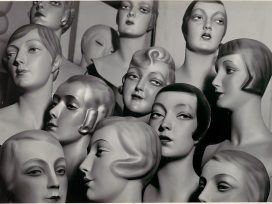The universe after the orgy
When all of culture is forced into quarantine, alternative movements become the subject of fantasy. We reminisce about a time when there was freedom of expression or dream about an emancipating experience never lived. And if music’s counterculture can still arouse our interest, perhaps it indicates that such fantasies are still needed.
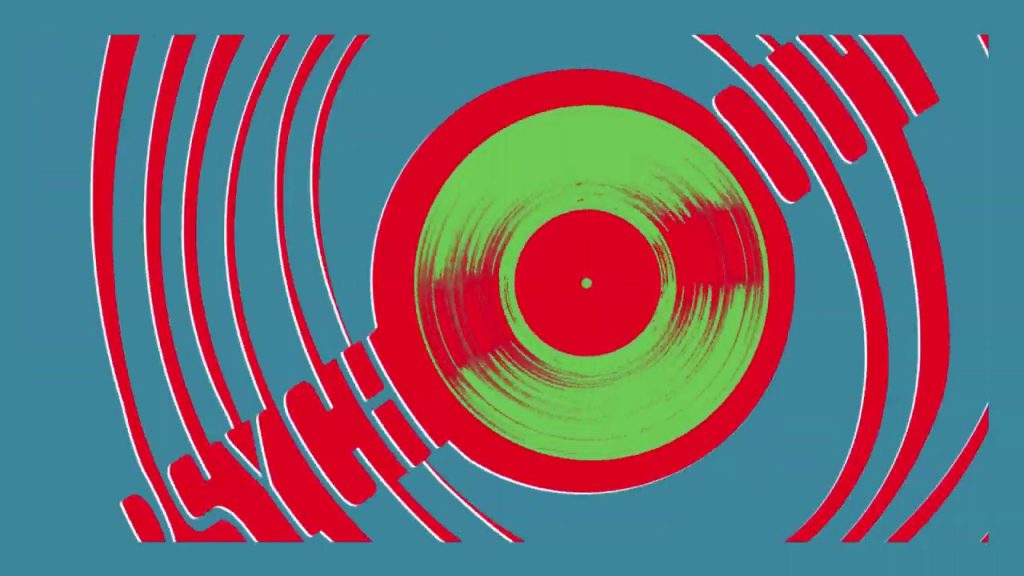
Planet or disk? Psychosis or gravity? From the preface to Psych-Out (1968, Richard Rush).
The psychedelic revolution has never felt more remote. It took an extensive change of mind-set to bring about 1960’s counterculture: new forms of artistic expression coalesced with 1968 protests and the civil rights movement. Now, anti-establishment agitators tend to be regarded as either brainwashed right-wing trolls or outright terrorists. New Age or hedonistic preachers rarely make the headlines, since society so willingly provides many alternative forms of medication and pleasure palaces. Why on earth would anyone have to go without? Everything is available. You just have to work to get it.
Besides, what’s the point of subcultural movements at a time when almost all mainstream institutions have had to close their doors? These days, repression is the new moral message, the maxim ‘put up or shut up’. To cry for change only produces a hollow echo.
But perhaps the struggle for emancipation in the 1960s suddenly seems meaningful simply because it is only now that we perceive how badly our economic system has served us – and that our acceptance of quarantine proves how repressed we are, how compliant.
There are plenty of reasons for scepticism about the psychedelic revolution. The closer you examine the hedonistic corners of the world of rock, the more clearly you spot the chauvinism, and sense the navel-gazing ecstasy of its ‘experimental phase’. Still, if highlighting just one thing about a rock magazine like Creem, recently commemorated in one of those memorializing documentaries that obscure what’s new, it would be its resistance against established forms of cultural journalism. It was a time of new departures. Creem championed all that was seen as low, silly, cheap, mad, dangerous.
Lester Bangs embodied this spirit and is, of course, central to the film Creem: America’s Only Rock ‘n’ Roll Magazine (2020). Creem made good use of the uninhibited DIY ethics of counterculture. Could Bangs, who respected no one, have published his gonzo reviews of rock anywhere else? Would the New York Times have allowed him to humiliate Lou Reed in duel after duel, in one piece of writing after another? Probably not. For his kind of journalism, he needed an underground zine. He needed a shot of self-destruction.
Consider just one anecdote. When Iggy Pop turned up in Detroit, he wanted, more than anything, to meet Lester Bangs. But when he stepped into the Creem editorial office, without saying hi to Barry Kramer at the editor-in-chief’s desk near the door, Kramer sped after him, said ‘Hey motherfucker, forgot your manners?’ and tipped a wastepaper basket over Mr Popstar’s head. The entity that was Creem was more rock’n’roll than the staff editors wrote about. No one was safe, not even insiders.
As Greil Marcus observes in the documentary, Bangs always struggled to make up his mind about what was good and what was bad. It was a time when tastes were on the negotiating table – unlike the present, when alternatives are no longer cultivated and everyone listens to everything regardless. Non-conformism was the norm and taken very seriously.
The Iggy Pop anecdote hides a ritual act of initiation: you become one of us if we shower you with rubbish. It is an invitation, a ‘welcome-in’. But it also signals how an underground magazine eventually came to attract the greatest respect from mainstream cultural pundits, quite in line with big money sucking up all of counterculture.
By now, Bangs is a dinosaur. Other people are in charge. What happened?
Counterculture and wellness
In 1974 Chögyam Trungpa, a Tibetan Buddhist monk, founded the Naropa Institute in Boulder, Colorado. It became one of many retreats that flourished during the post-war era as meditation sanctuaries for distracted westerners. It was a haven for audacious intellectuals, a meeting place for high-profile partisans of counterculture: Allen Ginsberg, Jack Kerouac, William S. Burroughs, Gregory Corso, R.D. Laing.
Trungpa was convinced that the westerners’ belief in dismantling their damaged egos was no more than self-deception, and that, instead of developing their minds, their spiritual techniques were reinforcing their egos. This was not only revealing about what was going on in his institute but also about the failures of counterculture. Throughout the 1970s, Naropa was essentially a hippie monastery, a setting for endless orgies and drug parties presented as spiritual experiments. For a more complete picture, add corruption and abuse.
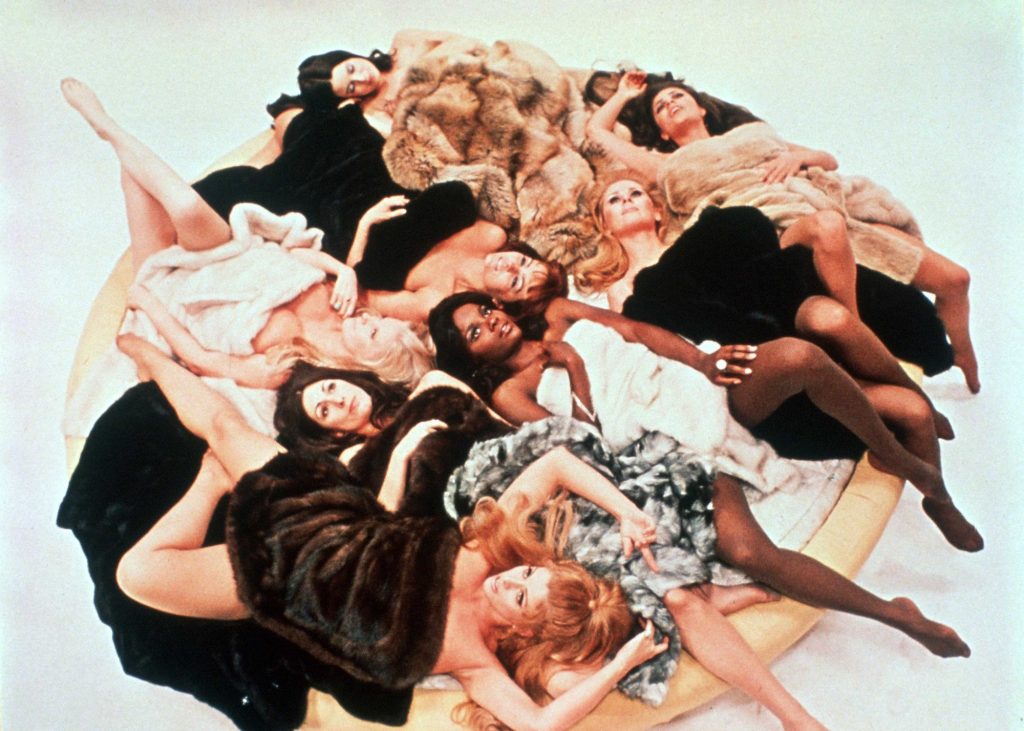
Dreams after the festivities. Still from Beneath the Valley of the Dolls (1970, Russ Meyer).
In an early article about the institute, the writer Peter Marin likened it to a home for a traditional, feudal priesthood in capitalist guise, a reiteration of the aristocratic hierarchies that appealed to the middle-class mind at a time when the market economy was taking off. The Naropa rebels stood for the breakdown of conventions, liberation of individual potential, achievement of satori – of sudden enlightenment. But their retreat from normality seemed only to strengthen the social structures under attack.
Could the revolution have ended in any other way? The poets of the Beat generation, who were the originators of the psychedelic wave in the 1960s, might have been chronically unfit for life, but they didn’t try to organize a Beat society, just as hippies didn’t have a vision of the future beyond a loosely structured collective offering ‘free’ love. Togetherness seemed more delirious than ever. Free concerts and free associations. Cultural experiences that nobody had to prove they deserved.
Romantic ideals had returned in full force; the poet was seen as a seer and art as a mutable concept, as applicable to thin air as a can of soup. Music could be a condensation of silence or sensed vibrations of past aeons, picked up through bare feet touching the ground. And the films: they were projections of mental experiments, cut and pasted to expose another, more authentic film – attainable either through divine or synthetic inspiration.
The 1960s is regarded as the decade of counterculture, because it was a time of new movements that challenged mainstream society. True, the establishment swiftly took these unorthodox teachings and practices onboard – notably, macrobiotic diets and Zen, together with a spirit of activism merging with asceticism and a sense of responsibility bordering on amnesia.
In his recently published book Retreat: How the Counterculture Invented Wellness (2020), Matthew Ingram argues that a more or less permanent state of ecstasy is not in itself sufficient to account for the near-total failure of 1960s counterculture. In his view, the bigger problem is how ignorant we have become of ‘the self’, or ‘psychic wholeness’ in Jungian terminology. Counterculture in decline exposed just how risky it had been to identify with one’s self, which psychic experimentation had either left in tatters or fed already budding delusions of grandeur.
Several of Ingram’s interviewees explain that the goal of counterculture was not to abandon oneself to egocentric pleasures as in Naropa but ‘to immerse oneself in one’s self’ in order to integrate with a group of others. Ingram writes that ‘wellness’ can be defined as a fusion of the self and the ego, between one’s innermost being and conscious awareness.
Our contemporary cultural experience of being held hostage by a virus has set up a curious parallel to counterculture’s interest in health: the virus seems to be an expression of the industrial exploitation of animals, plants and all nature, which in the 1960s had become a prime target for the anger of revolutionary movements. Now, Ingram observes, wellbeing is less a matter of health and more an absence of illness. Any problems that can’t be controlled by medication, especially psychopharmacological drugs, are not worth bothering about in a world where everyone is meant to be logged-in and switched on, under pressure, spaced out.
In a growth economy, everyone must maximize their potential at any cost. The ‘wellness’ industry, which has taken over from the idea of ‘wellbeing’, has replaced spirituality with an ideology of self-help based on short-term solutions and products for sale.
In the spirit of Buddhism, counterculture strove to cease striving – to leave the cycle of suffering. This is an antithesis of the neo-liberal focus on the individual, which ties us down more tightly and leaves us subjected either to (a)social media prodding towards distraction and depression, or to the junk food-fed energy of the 24/7 society, with its extreme ups and abysmal downs.
Bedside consciousness-raising
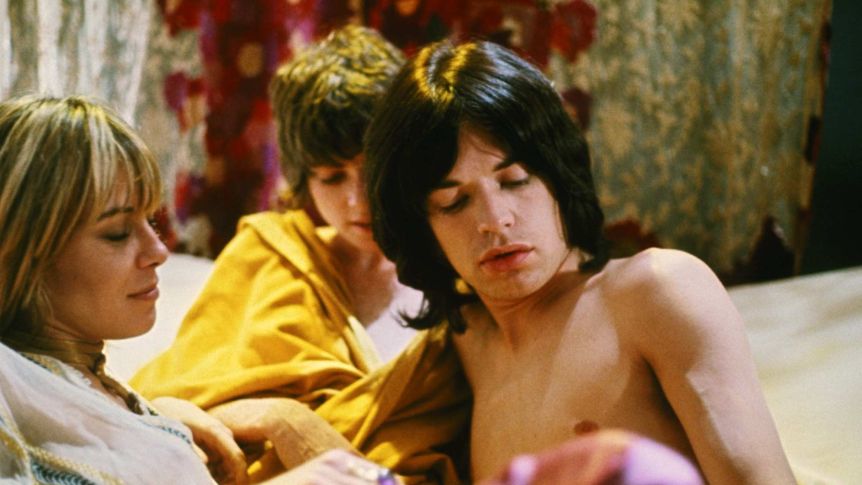
»The only performance that makes it, that really makes it, that makes it all the way, is the one that achieves madness.« Turner (Mick Jagger) in Performance (1970, Donald Cammell & Nicolas Roeg).
Many of the most significant late-twentieth-century artists and forms of music emanated from the psychedelic revolution. Those of us who grew up in its aftermath were imprinted with the idea that true culture had to seek newness and rebellion. But when innovation failed to materialize, we had to face the chilling reality of ‘business as usual’. We are living in a post-revolutionary era – or, in Jean Baudrillard’s words from Amérique, in ‘a universe after the orgy’. The time for great changes in music has passed.
We are left on our own to pick over the remains of someone else’s feast, store the important moments in archives and edit our playlists composed from the past’s overspill. We have accepted that the revolutionary period in music-making, roughly between 1950 and 2000, was an exception in the placid course of history, prime testament to counterculture’s importance. In its absence, it is still as audible today as when it influenced everything from postpunk to techno and acid house. Which is also the reason why so many critics have tried to resurrect the psychedelic mind-set. Its potential isn’t yet exhausted.
In his last, unfinished book Acid Communism (2017), the British critic Mark Fisher wrote that the last 40 years had been about, in Herbert Marcuse’s phrase from Eros and Civilization, ‘exorcising the spectre of a world which could be free’. Fisher died in 2017, just 48 years old, but has since become a far-reaching force behind the revival of psychedelia in British cultural theory, together with critics such as Jeremy Gilbert and Matt Colquhoun – a change that even affected the Labour Party under the banner of ‘Acid Corbynism’.
Fisher thought that neo-liberalism was best understood as a project aimed at destroying mushrooming attempts in the 1960s to practice either democratic socialism or hedonic communism. In response, reactionary forces set out to suppress whatever potential might remain alive in psychedelia, not least by turning an entire era into sellable products, ‘iconic’ works and nostalgically vague dreams of freedom.
The recently published book Postcapitalist Desire: The Final Lectures (2020) contains Mark Fisher’s last seminars, given late-2016 at Goldsmiths University of London. Inspired by the consciousness-raising groups of the 1960s and 1970s, he discussed the idea of ‘subjugated group consciousness’ as a means to exploit the contemporary frustration felt by so many, redirecting the negativity against the system.
Fisher thought an identarian sense of futility had taken over from class consciousness and that this ressentiment was fundamentally antithetic to solidarity and awareness. It had displaced issues of class and inflated the belief in me – that I deserve more, not we deserve more. Class consciousness has been quashed through the coercion of society’s subjugated people into identifying themselves with a career and by constantly persuading the deprived that, in their way, they have been successful. Or, as Lady Gaga said: ‘I’ve always been famous, it’s just no one knew it yet.’
The 1960s placed a character centre-stage who didn’t earn a living in a normal way or didn’t work at all. Marcuse, counterculture’s ideologue-in-chief, identified such figures in literature, observing in One Dimensional Man that ‘religious, spiritual, moral heroes’ are not antagonistic to the bourgeois order. Rather, the opposition comes from the profoundly idle and the unimprovable ne’er-do-wells, from ‘disruptive characters such as the artist, the prostitute, the adulteress, the great criminal and outcast, the warrior, the rebel-poet, the devil, the fool’.
These are the figures that both Fisher and Ingram gather around. The idlers. The dawdlers. Those who recognize the positive alienation in art and insist on finding a world beyond work. Consciousness-raising at the bedside. Politics as ‘dreamwork’: ‘So many encounters in those years were devoid of any logic save that of the dreamwork’, said Joan Didion about the 1960s in her book The White Album. Surely the drifters are those who can unsettle law and order today. Avoiding the choices already made for them. And not even seeking pleasure.
From the underground to Grieg Hall
So, what kind of dissenting movements could emerge nowadays, when ‘revolution’ has become one logo among many, yet another easily assimilated Twitter trend and the 1960s seems a far-away country, an era when real reforms were carried out and people truly lived? In The Trial of the Chicago 7 (2020), a matinée drama telling the story of the late-1960s mass-media-saturated trial, Aaron Sorkin highlights the establishment’s move to attack radicals. He has one of the defendants say that the group’s hippie style has harmed more than helped. In the future, when people speculate about what progressive politics might look like, they will picture flower-power children handing daisies to soldiers and trying to make the Pentagon levitate. The loons.
These gestures were crucial parts of 1960s radicalism. Without such an implausible utopia beyond the horizon of the thinkable, it wouldn’t have been possible to aim so high. Fantastical portents were part of the spirit of the age, as were the myriad insurgents, who did their bit to redefine the idea of community more often than not in extreme directions. Even though Fisher wanted to envisage a drug-free psychedelia, it is hard to think of Kerouac without speed, Ginsberg without LSD, Burroughs without heroin. Hard to think of changing consciousness by cultural theorizing. What we need are experimental ways of living beyond the norm.
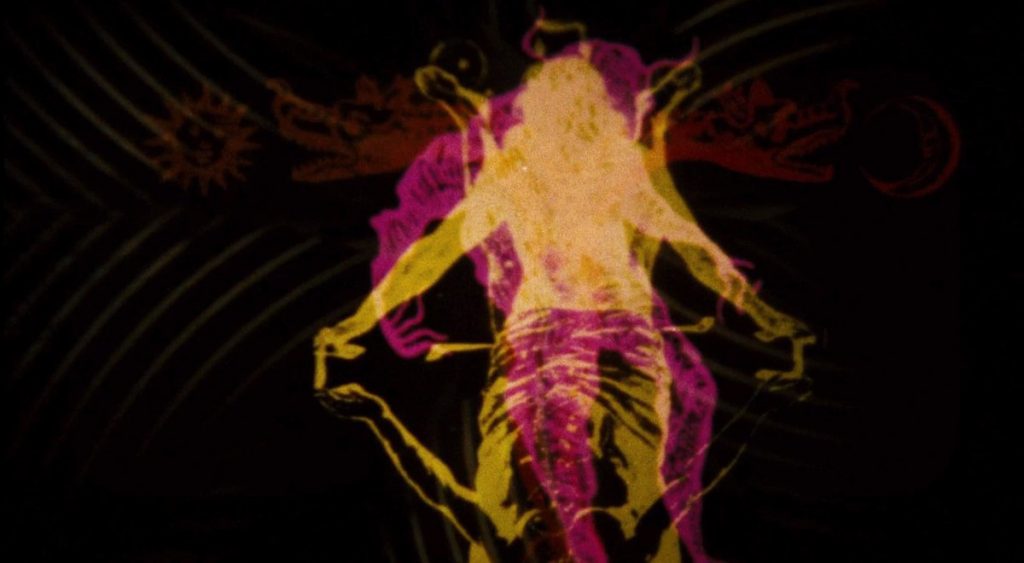
Psychedelic projections in The Trip (1967, Roger Corman)
The one factor which made the black metal scene possible in Norway was the handful of people prepared to develop a taste so far removed from the mainstream and put their lives on the line, sometimes literally, to sustain it. This is a key insight in a recent documentary series by the Norwegian broadcasters NRK: Helvete – historien om norsk black metal (Hell: The history of Norwegian black metal, 2020).
The frequent retelling of the story keeps the myths alive and kicking. Aside from the series’ first instalment about the band Mayhem, the black metal saga develops a clean, presentable narrative about The Great Norwegian Music Export, which is exactly what black metal has become – arguably Norway’s most important contribution to music history.
Black metal is a national icon, of the same order as Grieg and Munch, whose spirits are already represented in the dark nature romanticism of the genre. Corpse paint, growls and black leather jackets were quickly adapted as yet another set of style signifiers, a badge of honour as antagonism to the bourgeoisie.
As the NRK documentary moves on from the underground towards Grieg Hall – from murky basement venues to the grand, modern concert hall in Bergen – we note the turning point, the moment when a life-denying subculture was embraced by a wide audience. This wasn’t music created for easy listening. Black metal wasn’t meant for everyone. The documentary shows only certain punters were welcome in Helvete: anyone wearing white trainers who stepped inside the black-painted shop, which Øystein Aarseth, the brains behind Mayhem, opened in 1991, was in for it. Aarseth would point a finger: ’You there! Out!’
Is the rejection of outsiders not essential to build an alternative movement? It’s easy to mock the styles picked as group identifiers by subcultures or marginal revolutionary organizations. It’s too easy. Putting on codified clothing allows you to escape from your own self and unite with a collective, with a purpose. Belonging can never be a matter of just the music, however insistently its inscrutable spirit tries to alienate outsiders. Every detail of the subculture has a role in its indirect warfare with the worldviews of others, each vexatious intrusion is intended.
For as long as dissent stays on the boundary of the bearable, almost but not quite about to topple into uncontrollable madness, the music will have the destabilizing energy of ‘noise’, as used in the French vocabulary of Jacques Attali or Michel Serres: ‘noise’ as in ‘nausea’, music as vertigo, information as disturbance. This is the momentum before a subculture or music splinter-group is traded on the marketplace, something which always happens to noise, according to Attali, as a consequence of the inherent, prophetic qualities of revolutionary forms. Subcultures trace out new guidelines. Capitalists follow them up.
Culture as respect for the dead
If the story of counterculture teaches us that alternatives are inevitably sucked up by commerce, the subcultural movements that followed psychedelia have taken that lesson onboard. It was made explicit in the information wars that formed such popular features of punk, industrial and jungle. Live by the image, die by the image. Just as Throbbing Gristle and Crass realized the importance of the explicit record label as a basic element in their warfare, a band like Swans understood the value of an image and logotype rich in contradictions: a composite format, signalling COMMERCIAL but preaching ALTERNATIVE, song texts speaking of SLAVERY but announcing FREEDOM.
The Swans documentary Where Does a Body End? (2019) is in many ways the story of a music culture of the past. From the very beginning, Swans was an extreme band: extreme volumes, extreme lyrics, extreme changes of direction. Swans has been on one long, continuous journey. From youthful excess to mature introspection, from experimental symphonic rock to transcendental oldies’ krautrock. All made possible by the band being long-term outsiders.
Michael Gira, who leads the band, has been its one constant member from the early 1980s onwards. He was a child of the hippie era. Ran away in his teens and hitch-hiked around Europe. Went to Pink Floyd concerts, dealt in hash and was hauled off to prison in Jerusalem. And in the New York of the 1980s, he rose from the ashes of the post-punk scene, impoverished but aspiring – it was a time when the city still seemed a fertile ground for new and radical ideas, not least in the extreme artworld venues where Gira first tested his frazzled wings.
Swans is a band that, more than many others, invites you into an emancipating, collective excess. This sense of belonging is intrinsically tied to the raw energy that black metal and rock channelled at the beginning but located deep down at the lowest levels, among the most inferior lifeforms. This is how songs like Raping a Slave and I Crawled seemingly elicit powerful feelings of liberation, even though they ostensibly speak of the exact opposite.
There is something deceptive about observing counterculture through the lens of mainstream thinking. The image in this glamourizing rear-view mirror tends to be rather blurred. Documentaries about music-making are good at evoking the sense of time passing. If the subject deserves a film, it is surely of the past, and everything distant from the mutable present is easier to embrace, and to romanticize. How was this even possible? How could I have missed it?
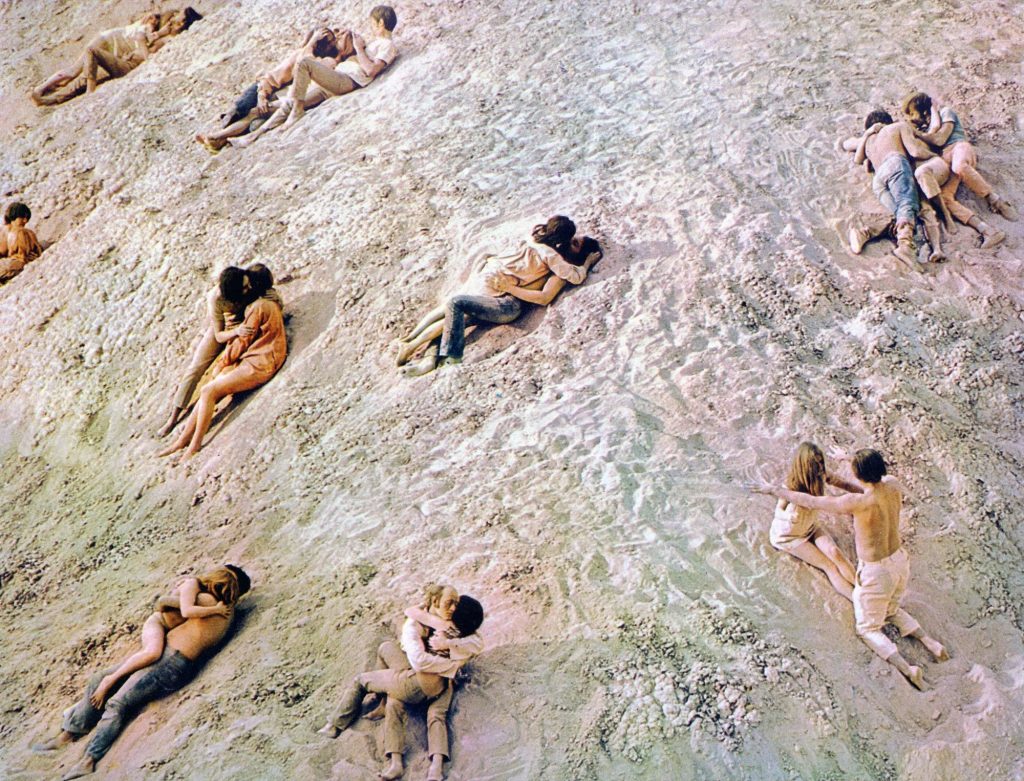
Excess and disillusionment in Death Valley. Still from Zabriskie Point (1970, Michelangelo Antonioni).
That is the trick: as you watch, you realize the lost opportunities and your failures to value what was important at the time, and your mind becomes clouded with sadness and guilt. This is how the music documentary has become an important means to implement the idea that culture is about respect for the dead.
It is true that artworks are departures from immediate reality, but art cannot leave reality for good. Its practitioners depend on exchanging ideas and experiences within a living community. For them, their work is often a by-product of a social context that demands just as much energy. If we shift our attention too much to their products, we give way to the ‘cultural heritage’ ethos so dear to the rightwing. Culture seen as paradise lost. Artworks as memorials and ancient symbols. No further use for new talent and new forms.
Psychedelic dissensus
It might be that learned critics such as Horace Engdahl are right: counterculture, once seen as subversive, is now in the limelight, while the old ‘high culture’ has been displaced and become the new subculture. The transition has grown still more obvious during the COVID-19 pandemic, where states and institutions are expected to act on behalf of the rest of us. These days, it’s the cultural elite that gets up the populists’ noses, not marginalized arty movements with nebulous ideas.
No one is horrified anymore by writers like Burroughs, Ginsberg and Kerouac. As time passes, they seem more and more like relics. Besides, live culture can be truly dangerous by turning hordes of people into spreaders of infection. Instead, cultural activity must be confined to digital windows, intensifying a trend in the 2000s. Once, counterculture tempted us with dreams of change, but every single one has evaporated.
This is surely not how it used to be. The twentieth century served as a framework for intense hostility towards mainstream obduracy. Art ripped apart settled notions of taste. And established new ways of living together. But in a time of crises and catastrophes, art forms can no longer engage our minds in the same way – not when we are all meant to look out for the woes and welfare of everyone else. As Mark Fisher argued, today we can no longer remain hostile to the past, because, somehow, we lack a sense of our future.
For those involved in counterculture, culture’s social purpose was crucial. These groups may well have been against the norms but only with the intention of seeking alternatives. Hence, being the avantgarde, the disposable yet ever-renewed, advance troop, was counterculture’s weighty task, defined nevertheless by its outsider status that the ever-faster pace of cultural change quickly reduced to a quaint left-over. The paradox of the avantgarde demonstrates why social context easily becomes problematic and why no group has ever been allowed to seek out newness for long.
The temporary is a resource. In order not to follow in the footsteps of homo normalis, or to create new norms, innovators must break away not only from ‘them’ but also from ‘us’ – all of us. Antinomy is inescapable. The paradoxical ‘we against us’ is the inherent value of counterculture. The optimism of the critique is what unites the movement.
These days, when all cultural workers are forced underground, it may well seem pointless to turn to the experimental ideas of the psychedelic revolution. Still, infighting between micro-factions benefits cultural work. Conflicts are needed to keep critical ideas in motion and put obstacles in the way of attempted unity, or any harmonic whole. What is needed is not a consoling consensus but rather a psychedelic dissensus. A collective in process.
Counterculture didn’t originate in an already existing community but rather saw itself as a future way of living together, in some utopian format that allowed the group to remain fluid. A sense of ‘us’ that offered alternatives unaffected by realistic demands and prejudices, a ‘we’ with the shared idea the world can be changed or, more often, at least be subjected to scrutiny: this isn’t good enough.
But once such critical attitudes have been integrated right across the social spectrum, leaving ‘high culture’ as a last, radical strong hold, the question must be asked: is the battle no longer subversive but out in the open? Have the agents of counterculture donned the mask of ordinariness and the old normality become a subversive hieroglyph?
Published 30 March 2022
Original in Swedish
Translated by
Anna Paterson
First published by Vagant (Swedish version, 30/11/2020), Eurozine (English version)
Contributed by Vagant © Joni Hyvönen / Vagant / Eurozine
PDF/PRINTPublished in
In collaboration with
In focal points
Newsletter
Subscribe to know what’s worth thinking about.
Related Articles

Literature that bridges the welfare gap
Vagant 1/2020
‘Vagant’ heralds writing that moves staid positions on the welfare state: freelance writer Henning Hagerup exposes Norway’s bureaucratic system; Christian Johannes Idskov notes the literary excellence and fated criminality of second-generation migrant Hassan; and Joni Hyvönen asks, Ken Loach: tragedian or saboteur?
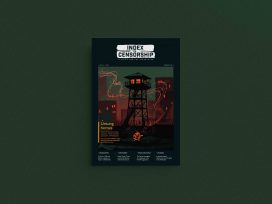
Muzzled music
Index on Censorship 4 (2024)
The Taliban’s persecution of musicians in Afghanistan; how performing the wrong songs became deadly in Turkey; a fresh wave of repressions against popular music in Cuba; and the stigmatization of drill in the UK.





